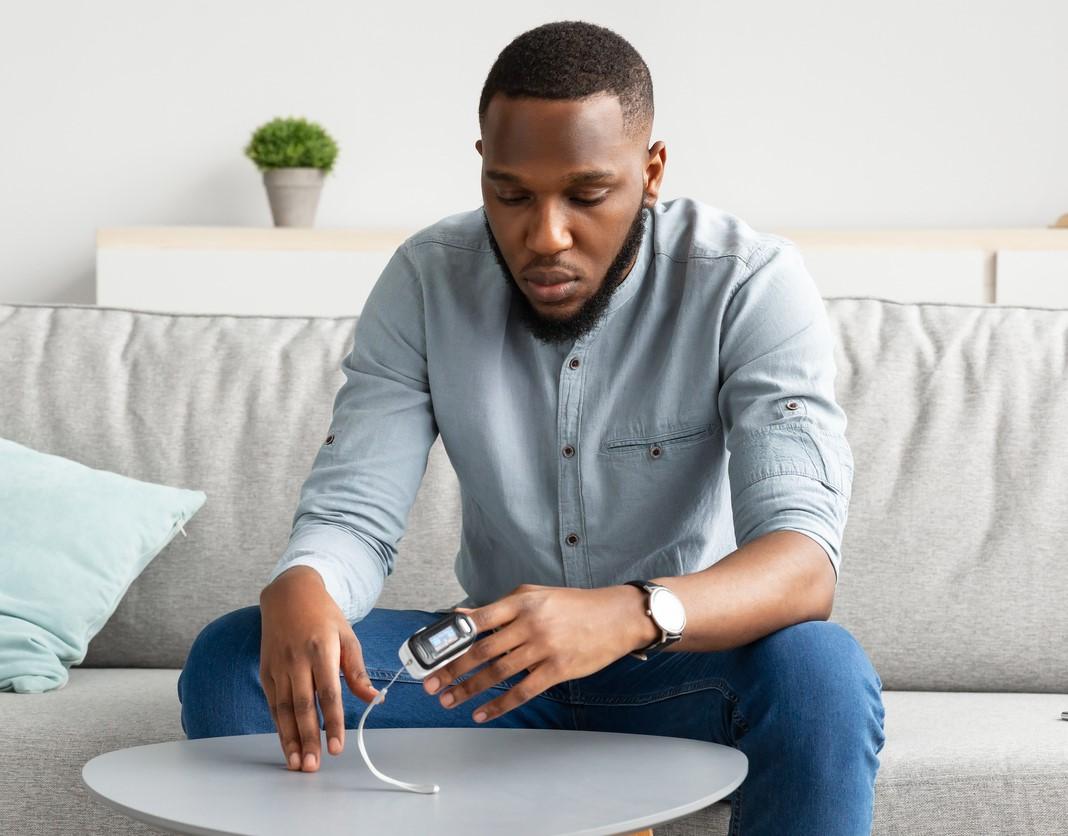COVID-19 patients can safely use inexpensive pulse oximeters at home to watch for a drop in blood oxygen that signals they need to seek advanced care, according to a systematic review published yesterday in The Lancet Digital Health.
Pulse oximeters are small devices that shine light through a patient's finger to measure his or her blood oxygen saturation. They can be used alone or as part of a remote patient monitoring (RPM) package.
Imperial College London researchers analyzed 13 observational studies involving 2,908 participants in five countries using pulse oximetry to monitor their blood oxygen levels from when the COVID-19 pandemic began in 2020 to Apr 15, 2021. Some RPM programs had participants monitor their own oxygen levels, while others developed a mobile app or website for patients to report their readings.
Participants included older people with more than one underlying illness, young people, and pregnant and postpartum women. All participants had COVID-19 except for 12 controls in one study.
Recommendations for pulse oximetry programs
The review showed that pulse oximetry enabled early identification of decreasing oxygen levels and helped triage patients with guided care escalation.
"Remote monitoring reduced unnecessary contact of health-care professionals with patients with COVID-19, which could control the risk of infection transmission and enable resources to be redirected to those who need them the most," the study authors wrote.
For example, one study found that only 5 of 162 RPM participants required in-person assessment. Another study of 279 RPM participants estimated savings of £640,000 (about $845,000) over 6 months.
The review findings led the researchers to make recommendations for policymakers and other researchers in creating an RPM program with pulse oximetry. A key recommendation is to use a cutoff point in blood oxygen saturation of 92% and a decrease of more than 3% after exertion.
Other recommendations included building an online portal, mobile app, or monitoring platform to monitor automatic blood oxygen readings and linking them with readings from patient health records.
Pulse oximeters should be delivered to patients in a timely manner, and staff-to-patient ratios should be adjusted based on COVID-19 severity and risk of deterioration, with models ranging from 1:25 to 1:50. "There is a need for a comprehensive cost analysis of RPM models that use pulse oximetry, including the cost of oximeters, staffing, and monitoring operations, and the time consumed by professionals to maintain the system," the researchers wrote.
Patients should be trained to use pulse oximetry using videos, online calls, or written documentation before the program begins, and monitoring should last for at least 12.7 days, according to the recommendations. Patients should measure their oxygen saturation one to four times a day after sitting or resting for 5 to 10 minutes and after walking for 20 to 60 seconds.
If patients have concerns, they should be able to call a 24/7 dedicated emergency phone line, and first-line clinical assessment in a nonemergent situation should be an online consultation. Policymakers and other researchers should monitor the percentage of RPM users who need hospital referrals, as well as median days to hospitalization, the authors said.
Easy to use, affordable, and widely available
The researchers said that pulse oximetry can help overwhelmed hospitals reserve limited resources for patients who most need advanced care, as well as prevent unnecessary emergency department visits. And identifying COVID-19 patients whose oxygen levels are dropping can prevent treatment delays and extended hospitalizations.
"However, we could not identify explicit evidence for the effect of RPM with pulse oximetry on health outcomes compared with other monitoring models such as virtual wards, regular monitoring consultations, and online or paper diaries to monitor changes in symptoms and vital signs," they wrote.
While some smartphones and mobile apps also can measure blood oxygen, the authors said that there isn't enough evidence to support their use in clinical monitoring.
In an Imperial College London news release, lead author Ahmed Alboksmaty, MBBCh, said that throughout the pandemic, COVID-19 patients have wondered if they should go to a hospital.
"Our study shows that people with COVID-19 can safely keep an eye on their blood oxygen levels at home using pulse oximetry," he said. "Pulse oximetry is easy to self-use, affordable in cost, widely available, and as we have shown, a useful way to identify health deterioration in COVID-19 patients."
The researchers noted that some RPM models are already in use in the United Kingdom, China, and the United States. But they cautioned that pulse oximetry may be less accurate in dark-skinned people than in White people, although research on that issue is lacking.
"It's vital to ensure that the current lack of research in racially and ethnically diverse populations is addressed," senior author Ana-Luisa Neves, PhD, said in the release. "It's therefore critical to provide support to ensure this technology reduces, rather than entrenches, existing health inequalities."
In addition, technical literacy and accessibility and financial hardship could undermine the benefits of RPM and limit its use, the researchers said in the study.
"Further qualitative research is needed to explore the potential exclusion of disadvantaged populations who might not be able to benefit from digital health services, to provide tailored care according to the patients’ needs and available resources, and to provide support to ensure health equity," they wrote.


















